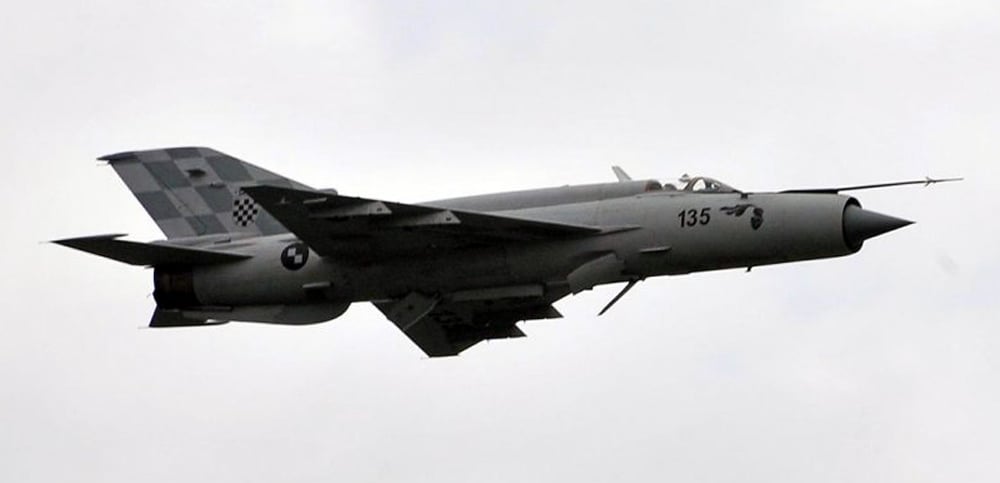Click Here to View This Page on Production Frontend
Click Here to Export Node Content
Click Here to View Printer-Friendly Version (Raw Backend)
Note: front-end display has links to styled print versions.
Content Node ID: 404552
Croatia’s government has selected the Dassault Rafale to fulfill its long-standing requirement for a multi-role fighter to replace its aging MiG-21s. Although local media had reported the selection a few days earlier, the decision was officially confirmed in an announcement made on May 28, the 30th anniversary of the formation of the Croatian National Guard.
Under a €999 million government-to-government deal, the Hrvatske Zračne Snage (HVS, Croatian air force) will receive 10 single-seat Rafales and a pair of two-seaters. The aircraft are being drawn from French air force stocks and are in the F3R standard. The proposal from France includes a simulator, basic weapons package, ground and test equipment, spares, and training. Comprehensive OEM support for aircraft, engines, and equipment will be ensured for three years, including a 12-month warranty.
“By purchasing fighter jets, Croatia is gaining a powerful strategic deterrent for the next 30 to 40 years, which significantly strengthens its international position, protection of airspace, and multiplies the overall combat capability of the Croatian army,” said Prime Minister Andrej Plenković. “The purchase of a multi-role fighter aircraft will strengthen Croatia's position as an ally within NATO and a partner within the European Union. Thus, for the first time, we will reach 2 percent of GDP allocated for strengthening our defense capabilities.”
Following a number of failed procurement efforts, Croatia launched a new fighter competition in July 2019. Offers were received covering new-build Saab Gripen C/Ds and Lockheed Martin F-16C/D Block 70s, used F-16s from Israel, and used Rafales from France. An interdepartmental commission assessed the bids, finding that the Rafale one was the best. Among the aircraft’s attributes that were highlighted were its ability to supercruise—flying supersonically without the use of afterburner—and its low radar signature.
Defense minister Mario Banožić commented that, following the arrival of the Rafales, the protection of Croatian airspace would be undertaken independently. At present, the nation’s airspace is protected partly by the MiGs, but also through an agreement with neighboring Hungary.
During a press conference held two days prior to the declaration of the selected bid, Banožić stated that the competition represented the final chance to proceed with an acquisition without creating a gap in tactical air capability. Despite having undergone an upgrade in Ukraine, the dwindling MiG-21 fleet cannot be expected to fly beyond 2024. If the deal with France can be concluded this year it is hoped that the Rafales can be in operational service before the MiGs reach their hard-stop.
Currently the single squadron of MiG-21bis and MiG-21UM two-seaters—the 191. Eskadrila Lovačkih Aviona (fighter squadron)—are the nation’s only fighter asset. They fly from Pleso air base near the capital, Zagreb, and it is expected that the Rafales will also be based there.
